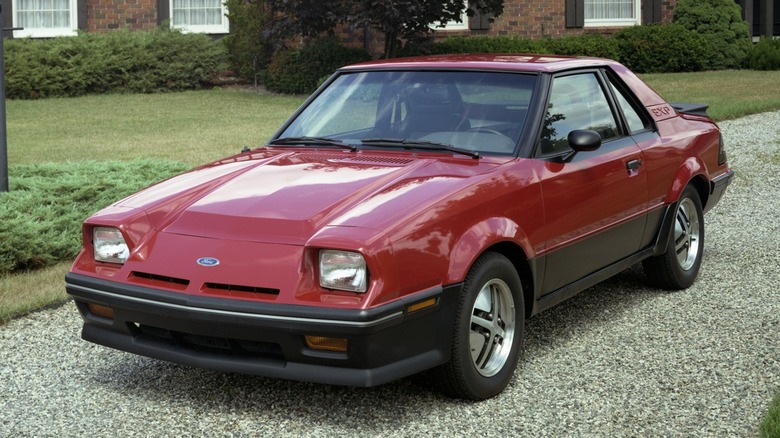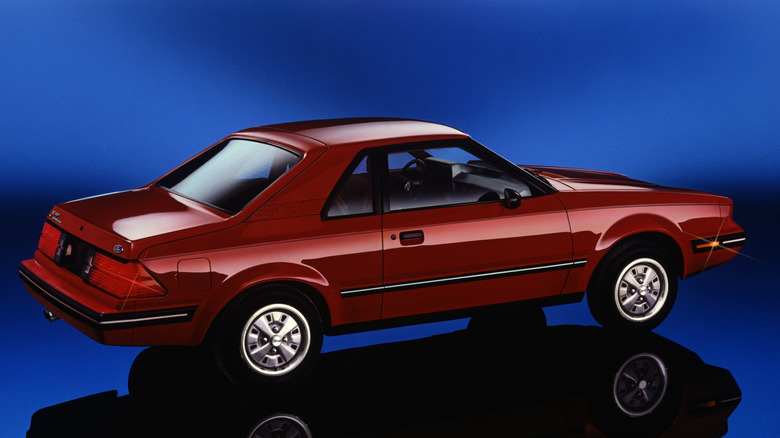The History Of Ford's Hidden Gem: The EXP
It's the 1980s, and Ford wants to capitalize on the success of its fuel-efficient Ford Escort, which remains one of the most iconic Ford models ever built. Its solution was to launch a brother to the Escort, the EXP, in 1981. Also known as the Escort EXP, the vehicle shared the 1.6-liter motor with 70 horsepower and a four-speed manual as the Escort GT. It was also marketed as the Mercury LN7.
So, why was it even produced if it had the same engine?
The EXP was unlike the Escort in more ways than one. It was famously Ford's first two-seater production car since the original Thunderbird. It was noticeably more compact than the Escort at 50 inches tall and just over 14 feet long. The biggest draw was that it featured a sporty aesthetic while retaining fuel efficiency. The sporty design included sleek lines and an aerodynamic shape. It also had a bulging headlight and a curved 'bubbleback' rear glass, among the car's biggest distinguishing features.
Its biggest problem was that it weighed 200 pounds more than the Escort despite removing the back seats. This made it chug in performance, achieving a 0-60 time of more than 14 seconds, making it slower than the standard Escort.
The EXP was priced much higher than the Escort. With the premium price tag came power brakes, map lighting, and a digital clock. However, a few fancy features and a flashy look weren't enough to draw in consumers.
Ford couldn't save it from failure
Ford projected the EXP to sell 200,000 in its debut model year, but it could only get half of that number out the door. The vehicle failed to achieve its intended purpose of being a fuel-efficient alternative to the ever-popular Mustang. Its struggle to tap into the market could have been due to there already being too many other choices in the same category, like the beloved Toyota MR2. However, Ford did not give up on the EXP after its initial failure.
A turbo model was introduced in 1984 with a fuel-injected 1.6-liter engine producing 120 horsepower. This gave it a 0-60mph time of around nine seconds. Additionally, it featured some trim adjustments, such as a spoiler and turbo badging, alongside TRX tires.
However, it wasn't enough, as Ford discontinued the EXP in 1988. The vehicle did have a second lease on life on the drag strip. Bob Glidden famously souped-up an EXP for drag racing. The vehicle was popular on the strip due to its aerodynamic design and compact size.
For everyone else, the EXP wasn't seen as something to keep around as a collector's item. As a result, it's hard to find one in working condition today. It can be argued that the EXP is a case of Ford's misunderstanding of what the public wanted. Its failure could also be due to the car looking flashy but not having the power to match.

